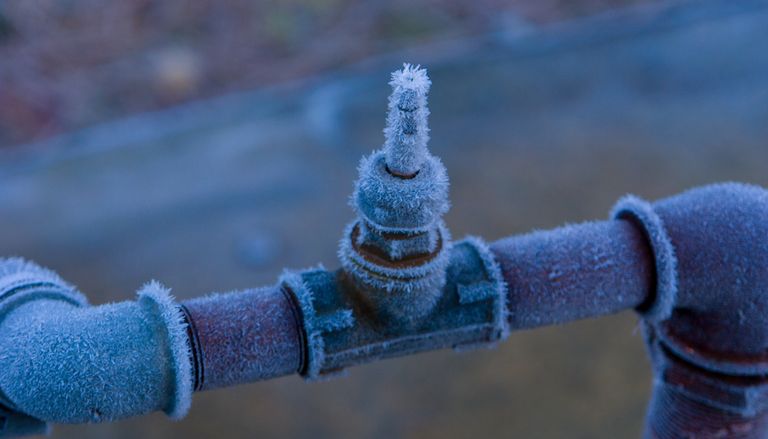Essential Strategies for Avoiding Frozen Plumbing in Cold Weather
Essential Strategies for Avoiding Frozen Plumbing in Cold Weather
Blog Article
This post listed below pertaining to 6 Ways to Prevent Frozen Pipes is really insightful. Give it a go and make your own personal results.

Cold weather can wreak havoc on your pipes, specifically by freezing pipes. Here's exactly how to stop it from happening and what to do if it does.
Intro
As temperatures decline, the threat of icy pipes rises, possibly resulting in pricey repair services and water damage. Recognizing just how to avoid frozen pipelines is vital for property owners in cold environments.
Prevention Tips
Protecting prone pipelines
Wrap pipes in insulation sleeves or use heat tape to shield them from freezing temperatures. Concentrate on pipelines in unheated or external locations of the home.
Heating strategies
Maintain interior rooms appropriately heated up, especially locations with plumbing. Open up closet doors to allow cozy air to distribute around pipelines under sinks.
How to recognize frozen pipes
Seek reduced water flow from taps, unusual smells or noises from pipes, and noticeable frost on subjected pipelines.
Long-Term Solutions
Structural adjustments
Consider rerouting pipes away from outside walls or unheated locations. Include extra insulation to attic rooms, basements, and crawl spaces.
Upgrading insulation
Purchase premium insulation for pipelines, attic rooms, and walls. Proper insulation helps preserve constant temperatures and minimizes the threat of frozen pipes.
Protecting Outside Plumbing
Garden pipes and outdoor faucets
Disconnect and drain pipes garden tubes prior to wintertime. Set up frost-proof spigots or cover outside faucets with shielded caps.
Understanding Frozen Pipes
What causes pipelines to ice up?
Pipelines freeze when revealed to temperatures below 32 ° F (0 ° C) for extended periods. As water inside the pipelines ices up, it expands, putting pressure on the pipeline walls and potentially causing them to rupture.
Risks and problems
Frozen pipelines can cause supply of water interruptions, building damages, and expensive repairs. Burst pipes can flooding homes and trigger comprehensive structural damages.
Indications of Frozen Pipes
Identifying frozen pipelines early can prevent them from rupturing.
What to Do If Your Pipes Freeze
Immediate activities to take
If you think icy pipelines, keep faucets open to soothe stress as the ice thaws. Make use of a hairdryer or towels soaked in warm water to thaw pipes gradually.
Final thought
Avoiding frozen pipes requires aggressive procedures and fast responses. By comprehending the causes, indications, and safety nets, property owners can secure their pipes throughout cold weather.
Helpful Tips to Prevent Frozen Pipes this Winter
UNDERSTANDING THE BASICS: WHY PIPES FREEZE AND WHY IT’S A PROBLEM
Water freezing inside pipes is common during the winter months, but understanding why pipes freeze, and the potential problems it can cause is crucial in preventing such incidents. This section will delve into the basics of why pipes freeze and the associated problems that may arise.
THE SCIENCE BEHIND FROZEN PIPES
When water reaches freezing temperatures, it undergoes a physical transformation and solidifies into ice. This expansion of water as it freezes is the primary reason pipes can burst. As the water inside the pipe freezes, it expands, creating immense pressure on the walls. If the pressure becomes too great, the pipe can crack or rupture, leading to leaks and water damage.
FACTORS THAT CONTRIBUTE TO PIPE FREEZING
Low Temperatures: Extremely cold weather, especially below freezing, increases the risk of pipes freezing. Uninsulated or Poorly Insulated Pipes: Pipes located in unheated areas, such as basements, crawl spaces, or attics, are more prone to freezing. Insufficient insulation or lack of insulation altogether exacerbates the problem. Exterior Wall Exposure: Pipes running along exterior walls are susceptible to freezing as they encounter colder temperatures outside. Lack of Heating or Temperature Regulation: Inadequate heating or inconsistent temperature control in your home can contribute to frozen pipes. PROBLEMS CAUSED BY FROZEN PIPES
- Pipe Bursting: As mentioned earlier, the expansion of water as it freezes can cause pipes to burst, resulting in significant water damage.
- Water Damage: When pipes burst, it can lead to flooding and water damage to your property, including walls, ceilings, flooring, and personal belongings.
- Structural Damage: Prolonged exposure to water from burst pipes can compromise the structural integrity of your home, leading to costly repairs.
- Mold and Mildew Growth: Excess moisture from water damage can create a favorable environment for mold and mildew growth, posing health risks to occupants.
- Disrupted Water Supply: Frozen pipes can also result in a complete or partial loss of water supply until the issue is resolved.
WHY CERTAIN PIPES ARE MORE PRONE TO FREEZING
- Location: Pipes located in unheated or poorly insulated areas, such as basements, crawl spaces, attics, or exterior walls, are at higher risk of freezing.
- Exterior Pipes: Outdoor pipes, such as those used for irrigation or exposed plumbing, are particularly vulnerable to freezing as they are directly exposed to the elements.
- Supply Lines: Pipes that carry water from the main water supply into your home, including the main water line, are critical to protect as freezing in these lines can affect your entire plumbing system.
- Underground Pipes: Pipes buried underground, such as those connected to sprinkler systems or outdoor faucets, can be susceptible to freezing if not properly insulated.
https://busybusy.com/blog/helpful-tips-to-prevent-frozen-pipes-this-winter/

I'm very interested in How To Avoid Freezing Pipes and I really hope you appreciated my piece. Are you aware of anybody else who is truly interested in the topic? Take a moment to share it. Thanks so much for going through it.
Get An Estimate Report this page